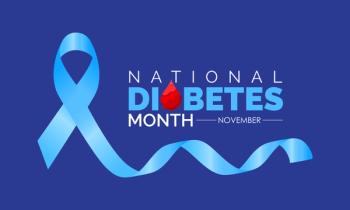
Clinical Overview: Preventative Tools for Respiratory Syncytial Virus
RSV can create a problematic infection among children 12 months of age or younger, older adults, and in patients with immunocompromised conditions.
Respiratory syncytial virus (RSV) is a type of virus that causes infections mostly in the lungs and in the respiratory tract. RSV is a very common type of virus, impacting most children by the time they turn 2 years of age, but it can also infect adults.
Depending on the age, RSV can cause severe infection in impacted patients. RSV can create a major and problematic infection among children 12 months of age or younger, in older adults, and in patients with heart and lung disease, especially those with immunological immunocompromised conditions.1,2
RSV activity is typically highest from November through March. RSV symptoms are typically similar to a cold, especially in adults and healthy individuals. Signs and symptoms may include runny nose, dry cough, low grade fever, sore throat, sneezing, headache, and congestion.
These symptoms mostly tend to appear about 4 to 6 days after exposure to the virus. In severe cases, RSV infection can cause bronchitis, pneumonia, severe cough, wheezing—especially in those with COPD—difficulty breathing, and bluish skin color due to lack of oxygen. In younger children, these symptoms may also result in difficulty breathing, poor feeding, unusual tiredness, and irritability.1
RSV infection can lower the immune response and make the infected person more prone to getting other infections, such as COVID-19. Because RSV and COVID-19 are both caused by respiratory virus, some symptoms could be similar.1
RSV can infect the body through the nose, mouth, and eyes. It spreads through the droplets in the air and various individuals can be infected through coughs and sneezes of infected individuals.
RSV virus can also pass via direct contact, such as shaking hands. Once RSV droplets are released by the infected person, it can live for hours on various surfaces. Therefore, it’s very easy for anyone touching these devices to inhale the virus.
When patients are infected, they can be contagious, especially in the first week of the disease. For those with lower immunity or in older adults, the virus can continue to spread even up to 4 weeks.1
Some individuals may have other risk factors that elevate their risk of becoming infected by RSV. This includes infants with premature immune systems, children with other comorbidities such as heart disease or lung disease, those with cancer on a chemotherapy treatment regimen, those with muscular dystrophy, and adults older than 65 years of age.1
When it comes to diagnosis, there are labs and imaging tests that can help with identifying and ruling out the complications. Blood tests can help with checking white blood cell counts and to look for viruses, bacteria, and other germs in the blood. Chest x-rays may reveal lung inflammation.
One of the major ways to prevent RSV infection is vaccination. There are 2 RSV vaccines approved for patients over 60 years of age—Arexvy (GSK Pharmaceuticals) and Abrysvo (Pfizer). These are currently approved as single-dose vaccines and have shown more than 80% efficacy in adults 60 years of age and older. It is the responsibility of the health care providers, to encourage the patients to receive the appropriate vaccine on time, so they can be protected from the RSV infection.3
For pregnant individuals, the FDA has approved Abrysvo to prevent the infection in infants from birth through 6 months of age. The dose can be given anytime from 32 weeks through 36 weeks of pregnancy.1
An antibody product called nirsevimab (Beyfortus) is another option that can be used for those younger than 8 months of age or in those 8 months through 19 months of age with a high risk of being infected by RSV.2
Preventive ways to avoid being infected by RSV include hand washing, avoiding exposure with those infected, regularly cleaning toys and surfaces in common areas, and not smoking.
Lifestyle modifications, preventive tools, and RSV vaccines are all effective tools to use for RSV prevention. As long as individuals, especially those at high risk, receive their vaccinations before the RSV annual season and follow simple lifestyle preventive measures, they should be able to avoid RSV infection.
References
- Mayo Clinic. Respiratory syncytial virus (RSV).
https://www.mayoclinic.org/diseases-conditions/respiratory-syncytial-virus/symptoms-causes/syc-20353098 . Accessed October 23, 2023. - Centers for Disease Control and Prevention. Respiratory Syncytial Virus (RSV).
https://www.cdc.gov/rsv/index.html . Published [insert publication date]. Accessed October 23, 2023. - Centers for Disease Control and Prevention. RSV Vaccination of Older Adults: FAQs.
https://www.cdc.gov/vaccines/vpd/rsv/hcp/older-adults-faqs.html#:~:text=There%20are%20two%20RSV%20vaccines,system%20to%20produce%20RSV%20antibodies . Published [insert publication date]. Accessed October 23, 2023.
Newsletter
Stay informed on drug updates, treatment guidelines, and pharmacy practice trends—subscribe to Pharmacy Times for weekly clinical insights.


















































































































































































































